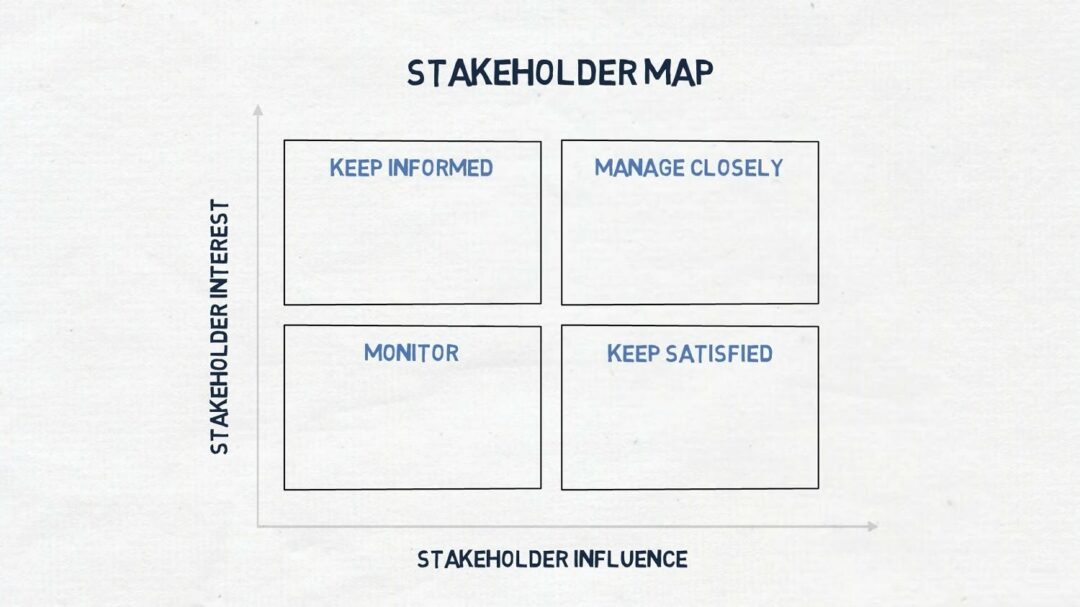What is a stakeholder map, and how to use it to find your stakeholders
Blog: Monday Project Management Blog
Management gets a bad rap. And often with good reason. In many companies, hierarchy trumps people with actual stakes in the success of a project or experts who have meaningful insights to offer.
You end up with a 60-year old who has barely heard of “Snap” in charge of emerging digital marketing strategies.
It’s not a good look.
A stakeholder map helps you categorize and manage relationships with everyone who is involved in a project, from customers to executives. So the right people are involved in calling the shots.
In this article, you’ll learn what a stakeholder map is and how to use it to identify your key stakeholders and improve your project workflows.
What is a stakeholder map?
A stakeholder map is a chart and technique you can use to categorize and manage relationships with stakeholders for different projects.
It helps you know who to involve at what level, based on their level of influence and interest in your particular project.
All you need to do is place your stakeholders in 1 of the 4 quadrants — it’s almost like a board game, just with higher stakes.
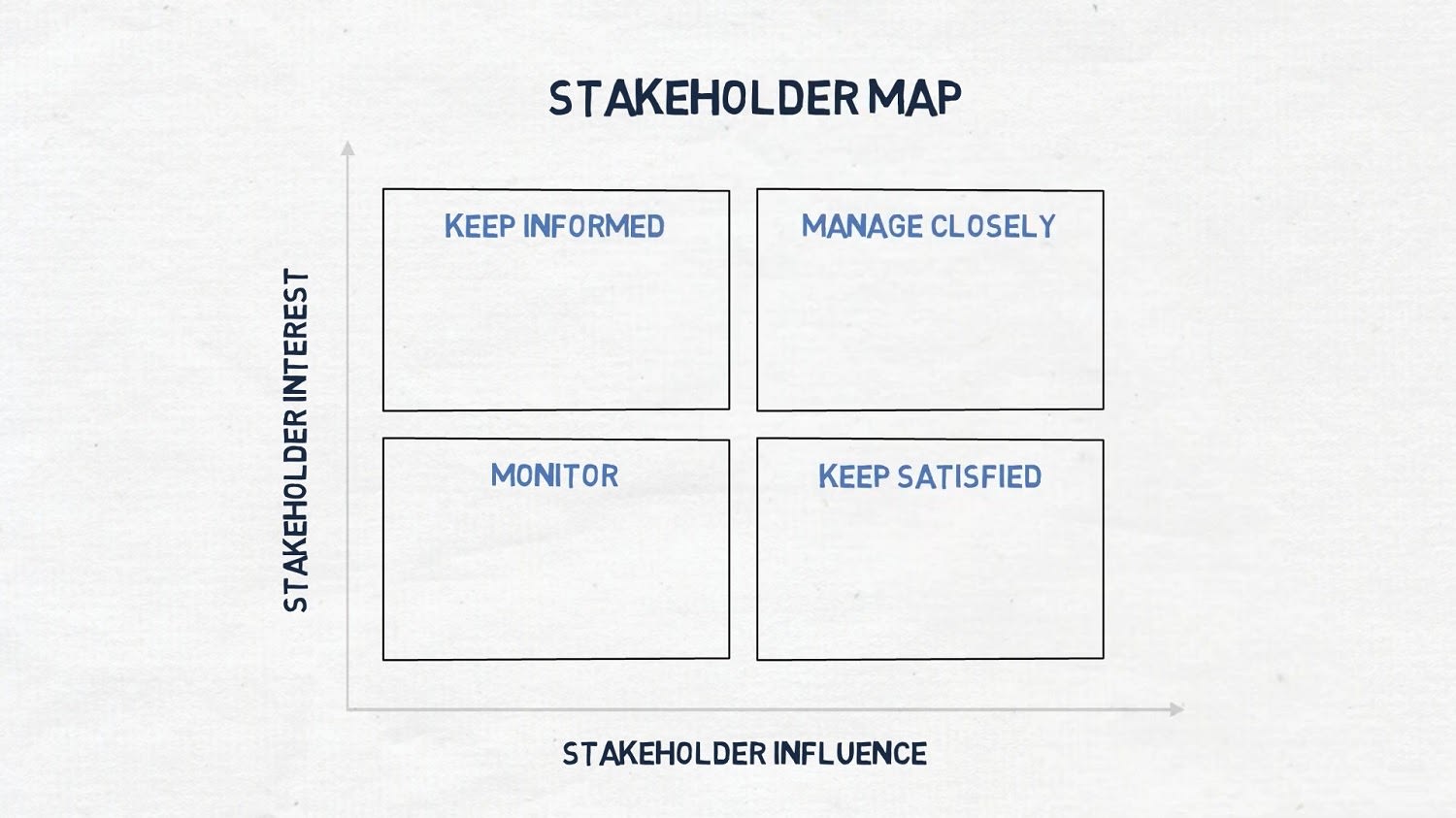
A stakeholder diagram is a fundamental tool in stakeholder analysis and the broader stakeholder management discipline. Other names for it are the power/interest matrix or just the stakeholder matrix.
But before you can start placing people on the matrix, you need to know who you should choose from in the first place.
How to identify your stakeholders?
To identify project stakeholders, start listing people who have something to gain or lose from your project. Does anyone come to mind?
A stakeholder is essentially anyone with a vested interest in the success of your project. For example:
- Executives: which senior management official should be involved? A CTO ( Chief Technology Officer) cares about all new technology investments, CMO (Chief Marketing Officer) about marketing campaigns, and so on.
- Business analysts: does your company rely on a business analyst to predict market needs? They should be involved in the process.
- Customers: do you have existing customers for a product or service you are updating or replacing? VIP clients need to have a voice, if you want to keep them.
- Internal users of product/service: does your company produce a product that your staff actively uses? For example, a sales CRM used by your sales reps.
- Business partners: will the project directly impact any of your dealings with business partners?
- Project managers: include not just your project’s PM, but any PM’s in the company who are managing other projects that could affect or be impacted by this one.
- Investors: The success of their investment depends 100% on the success of your company and your projects, so include them.
Overwhelmed yet? There’s a reason stakeholder management is a whole separate discipline.
And this isn’t even a complete list.
Even your competitors are stakeholders, as the success of your project will directly impact them, although they’re likely rooting against you — sorry.
What are the 4 types of stakeholders in project management?
The project stakeholder map divides stakeholders into 4 specific types based on the relationship they have with your project:
- Stakeholders to monitor
- Stakeholders to keep informed
- Stakeholders to keep satisfied
- Stakeholders to manage closely
Let’s explore each of these groups in more detail.
1. Stakeholders to monitor
The lowest level of stakeholders are not particularly interested in your project, nor will they be affected by it too much.
It sounds like you could just ignore them completely, right? Not so fast. How they react to your project may still offer valuable insights into how you should handle your project.
This stakeholder group may include:
- Customers of adjacent products
- Competitors
2. Stakeholders to keep informed
The second group mostly involves regular staff and customers who should be kept informed, but not involved in the decision-making process.
- Internal users
- “Regular” customers
- Account managers
They can often offer crucial insights, and meeting their needs is essential to long-term success.
3. Stakeholders to keep satisfied
This group of stakeholders have the power to disrupt your project but may not have a direct stake in it.
- Business analysts
- Indirectly involved executives (like a CTO when switching sales CRM software)
- Key account managers
- Business partners
Include them in regular meetings or reports, and make sure they’re satisfied.
4. Stakeholders to manage closely
These are the real bigwigs. They have a strong vested interest in the project and the power to stop it if they deem it necessary.
A key stakeholder could be:
- A directly involved executive
- A VIP client or project sponsor
- A government regulator
You must carefully manage these relationships at all costs. Don’t exclude them from decisions.
Beyond these 4 quadrants in the chart, you can also categorize stakeholders further as:
- Internal stakeholders: people who work within your organization with a stake in your project.
- External stakeholders: people from outside your organization with a vested interest in the project.
Which stakeholders are most important?
The simple answer is anyone who fits into the ‘manage closely’ box — but things are never that black and white.
A stakeholder you currently just need to keep satisfied could turn into one that needs close management if they feel unhappy with the way things are going, or if something changes.
Let’s take a closer look at why they’re so crucial to the process.
The importance of involving external stakeholders
External stakeholders like business partners and customers should be a fundamental part of any project. Otherwise, you risk creating a value gap in the actual implementation of the project.
Value gaps pop up when your team doesn’t listen to the final users of the product.

There’s no more dangerous idea than “knowing what the customers want” without having asked them.
Communication is the cornerstone of fruitful professional relationships as well, not just personal ones.
For this reason, the engagement of external stakeholders is rapidly becoming a priority for CEOs and boards of directors.
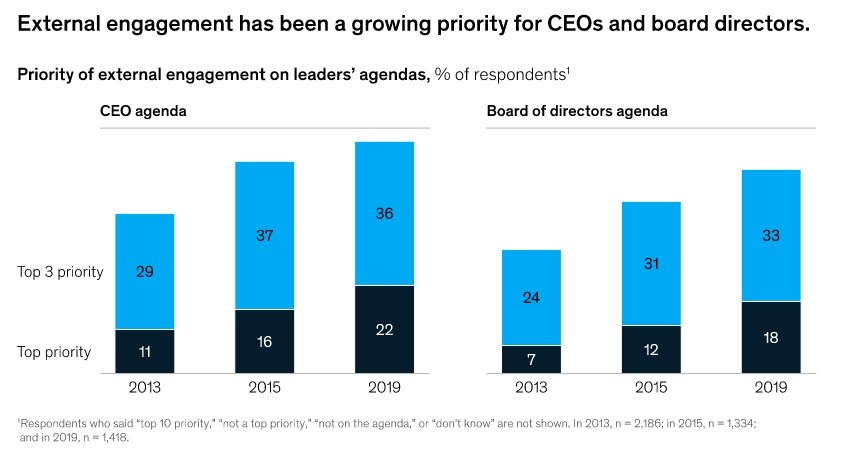
In just 6 short years, the amount of companies that have it as their top priority has more than doubled.
Unfortunately, engaging internal stakeholders is usually a lot easier than external stakeholders. They don’t share the same office, and they typically aren’t on the same “intranet,” corporate network, or digital workspace.
There’s a reason they’re called external, just saying.
To counteract this physical and digital distance, you need to:
- Identify the most important external stakeholders with the stakeholder map.
- Arrange regular workshops and meetings with them.
- Share project roadmaps and high-level plans.
- Set up digital channels for ongoing communication.
- Get their input before making crucial project decisions.
Stakeholder maps are part of the process, but they’re only the beginning. You must make it a priority in your company program and actually follow through.
If you’ve got a PMO, improving this area should definitely be part of your core PMO KPIs.
Why monday.com is the perfect ally for stakeholder management
If you want to crush silos and improve stakeholder engagement, monday.com is about to make your life a whole lot easier.
Stakeholder mapping is a good place to start, but take a look at these features that can take your stakeholder management so much further:
Use our plug-and-play template to hit the ground running.
Use our stakeholder register template to start managing important stakeholders better.
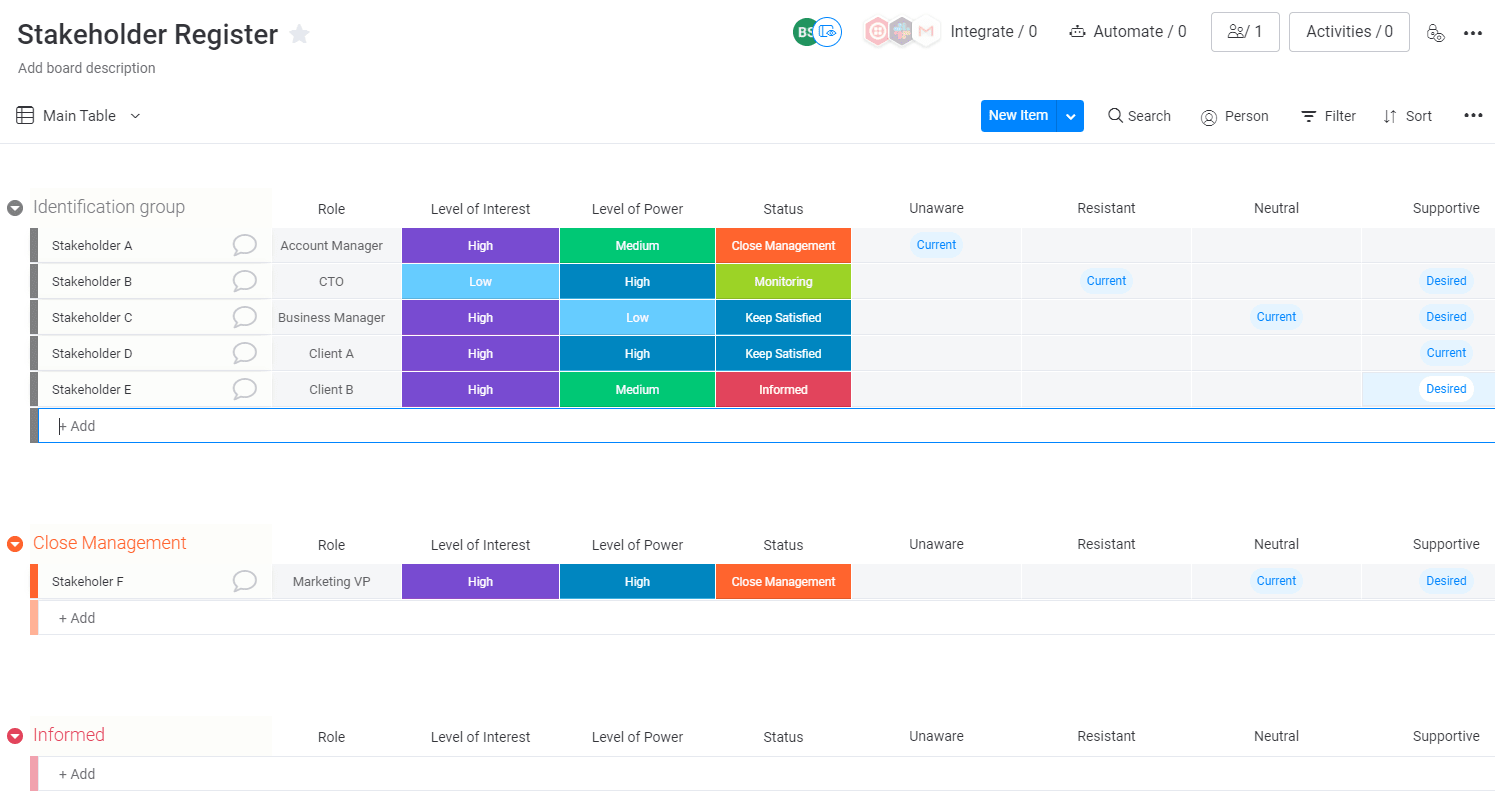
A single shared digital table with everyone involved makes it easier to identify every potential stakeholder, categorize them, and make sure they get the follow-up they want and deserve.
But of course, it doesn’t stop there.
With our user-friendly platform, stakeholder communication is a breeze.
Share access to roadmaps and high-level plans.
You can easily share guest access with stakeholders outside your company. If you want to avoid unwanted edits to these documents, you can control access with a variety of user levels.
- A viewer is only allowed to view boards but can’t create or edit any items or make changes.
- A guest user can view boards, add and edit items, columns, and more, but only to shareable boards. They won’t get access to your main and private tables.
You can control these access levels for each board, so, for example, someone can submit change requests but won’t be able to change the roadmap.
Communicate directly on specific items or even attached files.
If a stakeholder wants to add something to the project charter, they can add it directly to a specific item, or even an attached file.

That way, there’s no chance of emails getting lost or accidentally ignored. We know how inboxes can be.
Use dashboards and reports to keep all key stakeholders up to speed.
Manually emailing and messaging updates on milestones to everyone involved adds a lot of extra manual labor.
Plus, a text-based milestone update doesn’t have the same oomph as visualized data. The best way to keep every group with high influence happy, is to keep them in the loop.
Create and share custom dashboards with all relevant stakeholders.
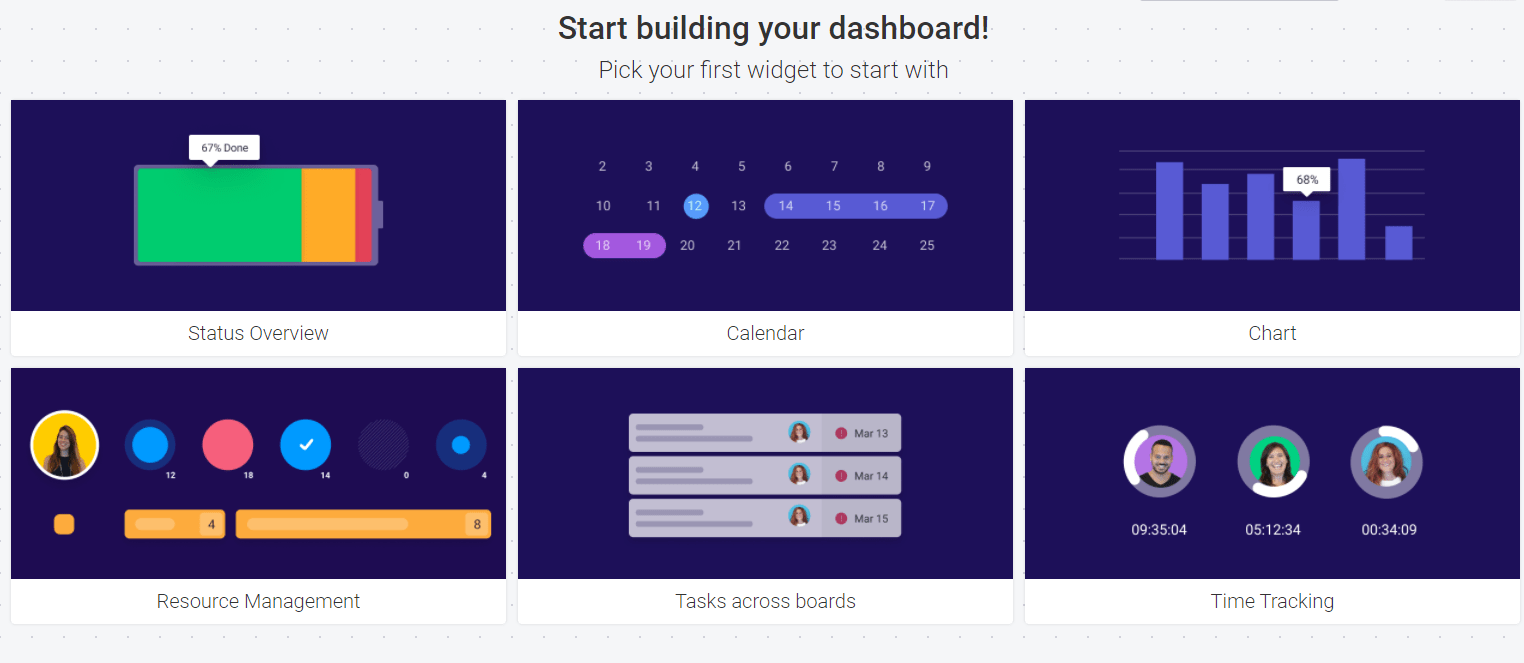
Send automated updates and messages with integrations.
monday.com’s robust automations and integrations also make it easy to send automated updates based on real project progress. You can also automate the response to their replies.
For example:
- Send automated emails, Slack, or MS Team messages when an item status changes.
- Automatically create work items based on comments or emails on specific channels.
Conclusion
A stakeholder map can help you identify the right people to involve in a project, leading to better management, decisions, and a higher chance of a successful result.
Our stakeholder register template makes it easy to manage and engage both your internal and external stakeholders better.
Increase your project’s chances of success with a smarter digital workspace.
The post What is a stakeholder map, and how to use it to find your stakeholders appeared first on monday.com Blog.
Leave a Comment
You must be logged in to post a comment.
